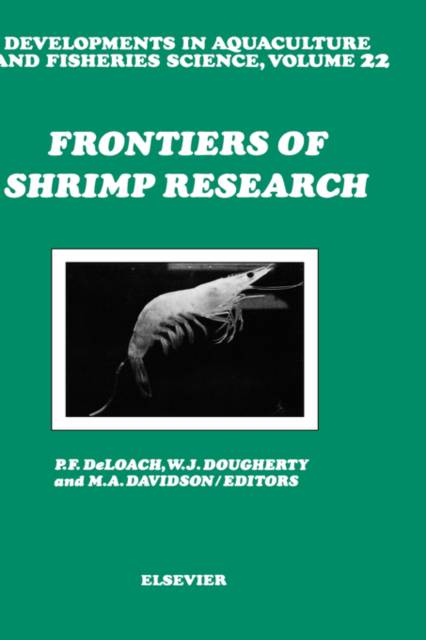
- Afhalen na 1 uur in een winkel met voorraad
- Gratis thuislevering in België vanaf € 30
- Ruim aanbod met 7 miljoen producten
- Afhalen na 1 uur in een winkel met voorraad
- Gratis thuislevering in België vanaf € 30
- Ruim aanbod met 7 miljoen producten
Zoeken
Frontiers of Shrimp Research
Volume 22
€ 364,95
+ 729 punten
Omschrijving
Shrimps are subject to great consumer demand in the United States. However, more than #1 billion worth of shrimp is now imported; more than twice the amount produced domestically. Domestic shrimp production, mostly from the trawler fleet in the Gulf of Mexico, is thought to be at its maximum sustainable yield of 91,000 MT (heads-off). Increased production of shrimp in the U.S. through mariculture has been motivated by the increasing demand for this product.The biology of penaeid shrimp and lack of technology for their culture present special problems in fisheries science, reproductive biology, endocrinology, nutrition, pathology, culture science and future research. The purpose of the Frontiers of Shrimp Research symposium was to assess the status of shrimp research in these areas and to further foster the scientific collaboration vital for significant research advances. The participants included representatives of the science funding agencies, the mariculture industry and representatives of both the scientific research and science policy communities.The subject matter should be of interest to a variety of readers. Advanced undergraduate/graduate students, mariculturists and research workers will find this volume both interesting and informative.
Specificaties
Betrokkenen
- Uitgeverij:
Inhoud
- Aantal bladzijden:
- 304
- Taal:
- Engels
- Reeks:
- Reeksnummer:
- nr. 22
Eigenschappen
- Productcode (EAN):
- 9780444883469
- Verschijningsdatum:
- 6/06/1991
- Uitvoering:
- Hardcover
- Formaat:
- Genaaid
- Afmetingen:
- 156 mm x 234 mm
- Gewicht:
- 603 g

Alleen bij Standaard Boekhandel
+ 729 punten op je klantenkaart van Standaard Boekhandel
Beoordelingen
We publiceren alleen reviews die voldoen aan de voorwaarden voor reviews. Bekijk onze voorwaarden voor reviews.










